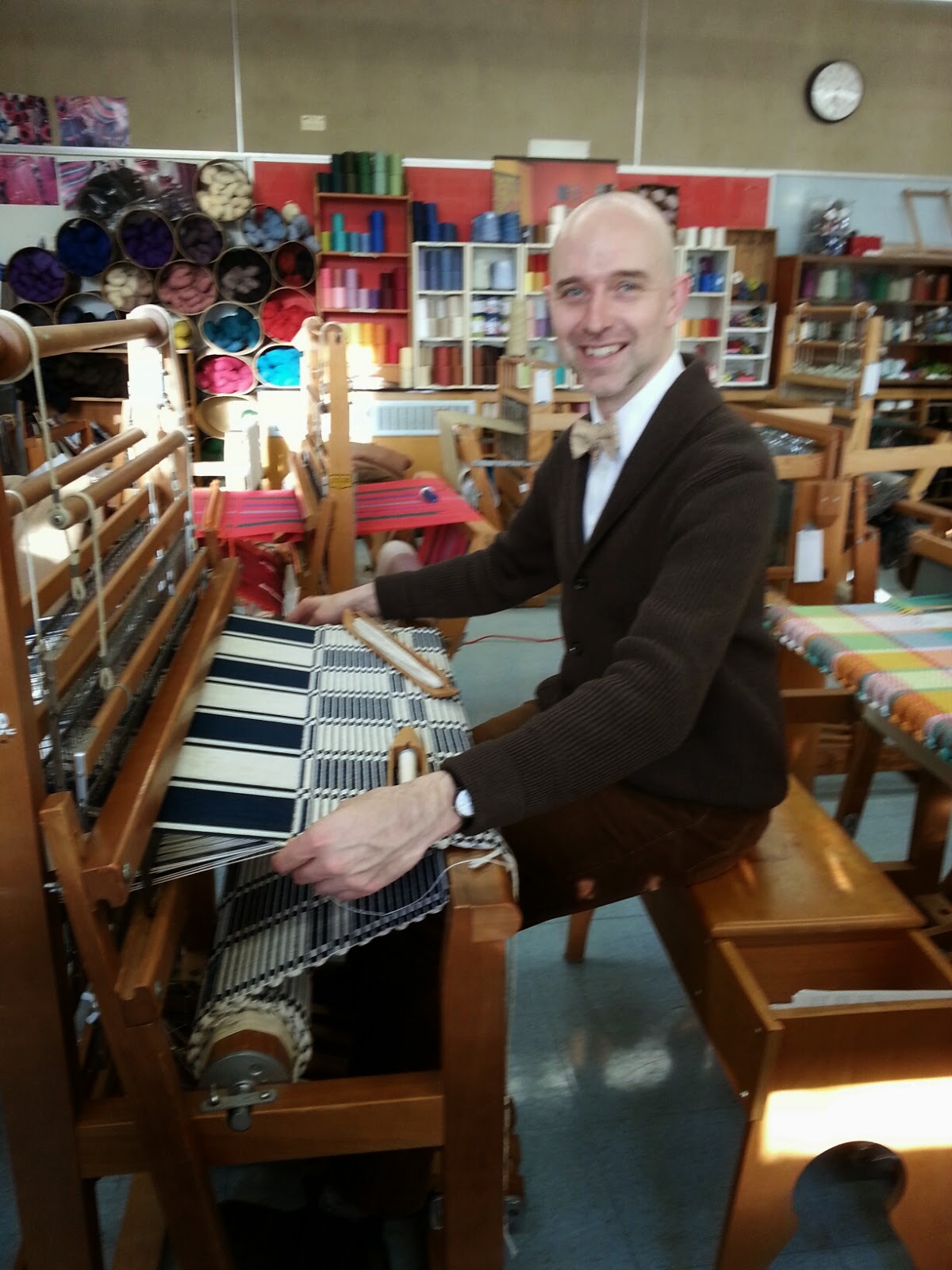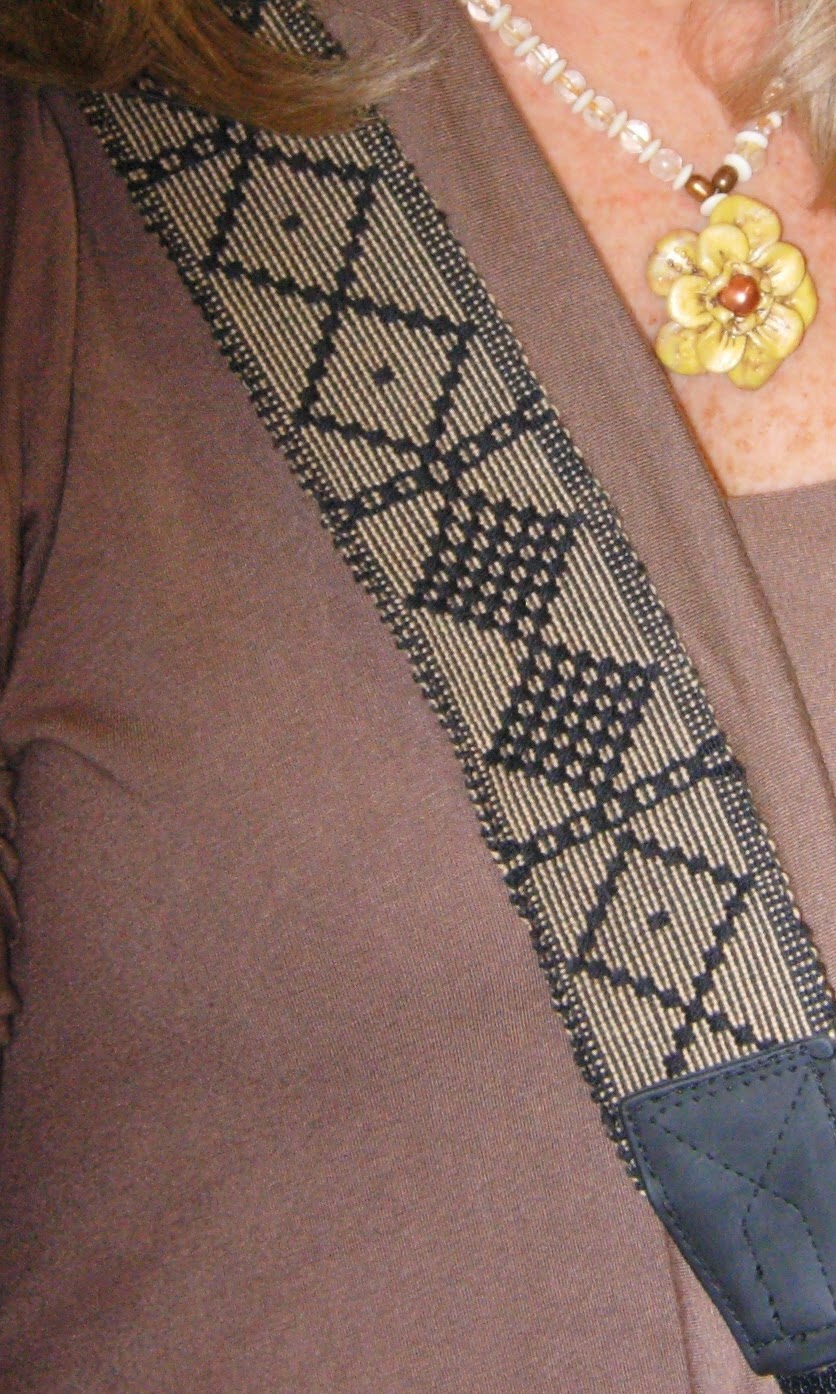Doubleweave throw inspired by a Madelyn Vanderhoght design . Woven by Julia Pelenyi.
Remember those games some of us of a certain age played as kids? One of them was Simon Says (or Simple Simon Says). One player takes the role of Simon who is the command giver. Players are only supposed to do as instructed when the command is preceded by "Simon says". All other instructions are to be ignored. Players are eliminated from the game by either following instructions that are not immediately preceded by the phrase, or by failing to follow an instruction which does include the phrase "Simon says".
Doubleweave throw inspired by a Madelyn Vanderhoght design . Woven by Julia Pelenyi. Jessica Brousseau wanted to give it a try!
There is little emphasis on physical capacity and what is developed is the ability to distinguish between valid and invalid commands. The winner of the game is usually the last player who has successfully followed all of the given commands. Another version of this game was "Mother may I".
Conrad Dueck weaving his repp weave rug.
Conrad Dueck's repp weave rug taken from Laila Lundell's book.
I guess you are wondering what got me thinking about these games? Many of us are instruction challenged (and I can say that is true for myself as well - I don't follow instructions well which is why I try to be giving them rather than taking them!) . Try an experiment. If I gave you 10 different instructions, and then you had to do exactly what I said all in sequence, without my repeating, just how correctly would you execute those instructions? I know I wouldn't do very well given that set of circumstances. Just try remembering a set of driving instructions someone gives you for a place you are looking for....don't you usually have to ask at least one other person , that is to say pre-GPS! Even with the GPS I'm challenged to do exactly what it says! As to the above project, the repp weave rug by Conrad, this is perfect example of changing the instructions. Sometimes a set of instructions are more complicated than they have to be and so I adapted them so that they were easier to execute. Perhaps these various interpretations and variations on how to do something illustrates our capacity to process information in so many unique ways, arriving at the same result, but with different paths or maps so to speak. Which makes me wonder how in the world we manage to get along, get anything done and understand each other. Assumptions, interpretations, distractions, life's troubles and challenges really impact on how we understand or don't understand what is said! As somone once said to me recently, these various interpretations gives the experience another texture and dimension, and affirms that individuality and personality overrides conformity eventually. Yes! It must be so and I wouldn't want it any other way!
Below, pictures of a day (and evening) in the weaving class!
Kim Dayman
Agota Dolinay
Judite Vagners
Susan Abrams
Marion Kirkwood
Darlene Haywood
Gert Rogers
Bonnie Thorn
Jane Richmond
from left to right: Andrew White, Helen Skelton, Mary Pietropaoulo, Ann Marie , Andrea Kristoff
Left to right: Lis Bastion, Patti Wibe
Emma Cunnigham
Woven Shibori Workshop - June 2-6. If you are interested please contact me: linedufour.tapestry@gmail.com
Crimp and Create weaving workshop - June 10-12 If you are interested please contact me linedufour.tapestry@gmail.com
The Tapestry Blog http://tapestryline.blogspot.ca/2014/03/simon-says.html


























.jpg)
